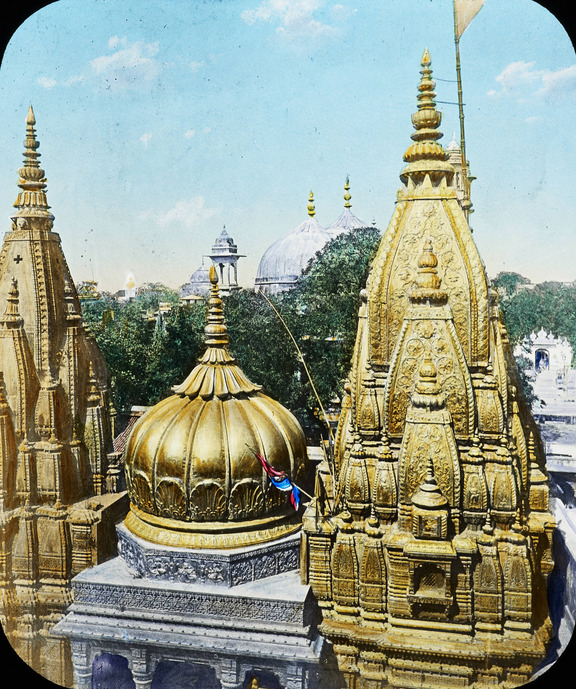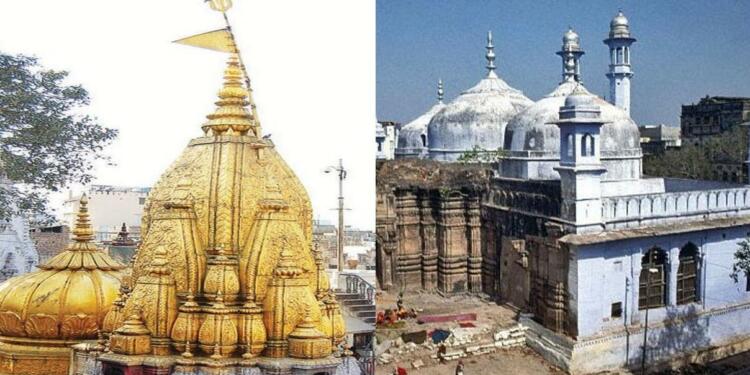A significant movement towards legitimately reclaiming the glorious past of Sanatan Dharma has begun. With Ram Janmabhoomi being pivotal in the movement, it’s now time for hundreds of other temples to reclaim their original land. The State of Uttar Pradesh and chief minister Yogi Adityanath need a special mention in this movement. Ayodhya, Varanasi, Gorakhpur are just a few names where the temples are being granted their original respected status. Kashi Vishwanath temple is one such temple in Varanasi (Kashi), which was destroyed by oppressive Aurangzeb, is now on the verge of reclaiming its glorious past.
Kashi Vishwanath Temple which stands on the bank of river Ganga and is one of the twelve Jyotirlingas(Holiest temple of Lord Shiva) had been last tormented and destroyed by the barbaric dictator Aurangzeb. In the Islamic history of destroying temples, Kashi Vishwanath needs a special mention. It was first destroyed by Aibak’s army in 1194 AD only to be rebuilt by a merchant a few years later. Nearly 200 years later it was again destroyed by Islamic rulers, only to be rebuilt by Raja Man Singh during Akbar’s rule. Its last destruction was led by Aurangzeb in 1669 with building a Jama masjid called Gyanvapi mosque. The current Kashi Vishwanath structure was built on an adjacent site by Queen Ahilya bai Holkar in 1780, though Gyanvapi is still standing there. It is believed that the original lingam was supposedly hidden by the priests inside the Gyan Vapi well during Aurangzeb’s destruction of the Temple.
Now, 5 Hindu women led by Rakhi Singh have sought the right to worship inside the premises of Gyanvapi mosque which was originally Kashi Vishwanath Temple. The women through their advocates argued that the devotees had an indefeasible right to worship the “visible and invisible deities”, inside the complex of Old Kashi Vishwanath Temple which was destroyed by Aurangzeb. They further added that the defendants should be ordered not to interfere in the fundamental religious rights of the plaintiffs’ which included decorating idols of Bhagwan Ganesh, Bhagwan Hanuman, Devi Gauri, and Nandi in the temple. Reminding the court of the Islamic history of the destruction of temples, they demanded a temporary injunction directing Mosque Management Committee not to destroy the idols. Varanasi court has sought a response from UP Government, Gyanvapi mosque management committee and Kashi Vishwanath Temple Trust on the issue.

Like Ram Janmabhoomi, Kashi Vishwanath Temple’s reclamation has been a burning issue for decades. This issue has been in courts even before independence. The real progress seems to be happening only after Hindus have garnered mobilization of their society in the wake of the Ram Janmabhoomi verdict in 2019. In April 2021, a Varanasi court ordered the ASI ( Archaeological Survey of India ) to survey the mosque. An inclusive 5-member team of which two are Muslims has been formed for the same. With the archaeological survey taking its own time, the women have decided to take a leap forward in reclaiming the Temple.
Unlike in Ayodhya, the mosque in Kashi visibly infringes upon what appears to be a temple-like structure. Although the Ram Janmabhoomi victory was a very difficult one for Hindus, the reclamation of Kashi Vishwanath, or in the immediate future, at least proving the fact that the Gyanvapi Mosque infringes upon Hindu temple land will not be extraordinarily tedious.































